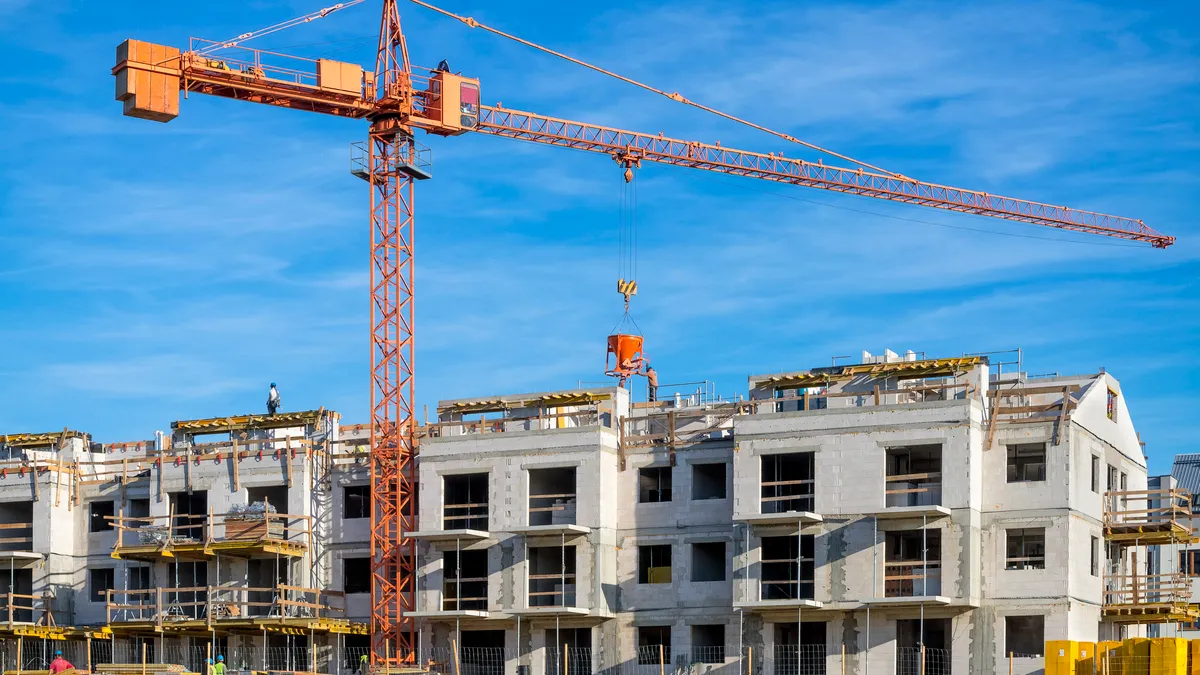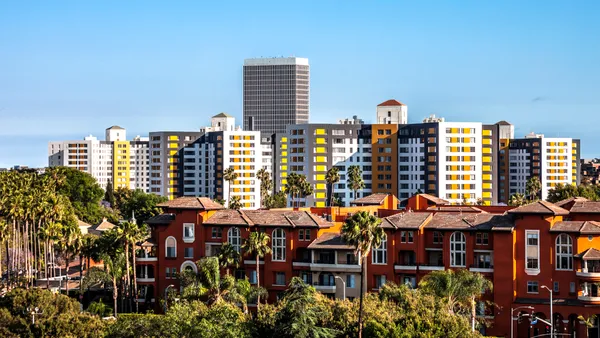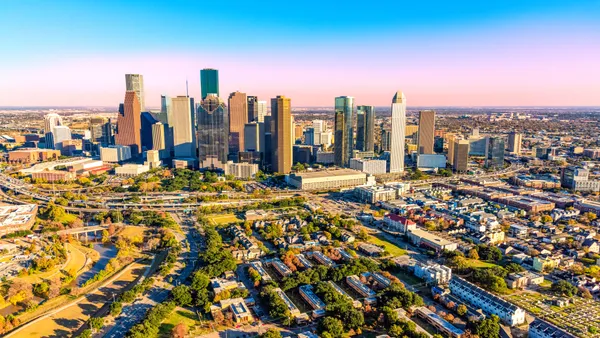Dive Brief:
- The national average multifamily rent rose by $4 from May to June, up to $1,739, according to Yardi Matrix’s latest National Multifamily Report. At the same time, year-over-year rent growth fell by 20 basis points, down to 0.6%.
- Advertised rents rose 1.5% during the first half of 2024 and 1% during the second quarter, which the Yardi report describes as a moderately positive result. For comparison, in the five years before the COVID-19 pandemic, rent growth averaged 2.5% per year in the first half and 1.7% in the second quarter. Between 2021 and 2022, rents rose an average of 6.1% in H1 and 3.9% in Q2.
- Immigration, strong employment growth and weak home sales continue to drive absorption in many markets. However, rising expenses and large delivery volumes in some metros, particularly in the Sun Belt, continue to create multifamily market headwinds. In addition, despite a decline in inflation, interest rates remain high, which could keep transaction activity slow.
Dive Insight:
The multifamily market is on track to absorb more than 300,000 units in 2024 — far below the 600,000 absorbed in 2021, but still a healthy amount, according to Yardi. The national occupancy rate was 94.5% in May, down 0.5% YOY and unchanged from April. (Occupancy data is current to the previous month.)
New York City led the nation’s largest cities in rent growth, up 4.8% year over year and 1.1% from May to June. Northeast and Midwest cities showed the strongest positive growth, while rents in Sun Belt metros remain on the decline. Austin, Texas, came in at the bottom of the top 30 metros with -6.5% YOY rent growth
| Market | YOY rent growth, June 2024 | YOY rent growth, May 2024 | Difference |
|---|---|---|---|
| New York City | 4.8% | 4.8% | 0 |
| Kansas City, Missouri | 3.4% | 3.4% | 0 |
| Columbus, Ohio | 3.2% | 3.6% | -0.4 |
| New Jersey | 3.1% | 3.4% | -0.3 |
| Washington, D.C. | 3.0% | 3.0% | 0 |
| Boston | 2.9% | 2.6% | 0.3 |
| Chicago | 2.9% | 2.8% | 0.1 |
| Indianapolis | 2.6% | 1.9% | 0.7 |
| Philadelphia | 2.6% | 2.4% | 0.2 |
| Detroit | 1.8% | 2.4% | -0.6 |
SOURCE: Yardi Matrix
While the single-family build-to-rent sector is outperforming conventional multifamily in terms of year-over-year growth, its rents fell slightly in June, down $3 to $2,166, while YOY rent growth fell 30 basis points to 1.1%. Occupancy remained high at 95.4%.
Overall multifamily operating expenses rose 8% YOY to $8,890 per unit on average in 2023. While post-pandemic rent growth generally offset expense increases over the past few years, Yardi now expects relatively weak rent growth to continue through the rest of 2024, particularly in Sun Belt markets that are already struggling.
These two factors combined could mean lower income growth for operators. “If expense growth does not moderate, consequences will include rising mortgage defaults and a curtailment of needed new development,” the report reads. “For owners, improving operating efficiency by streamlining processes and implementing new technologies is essential.”











